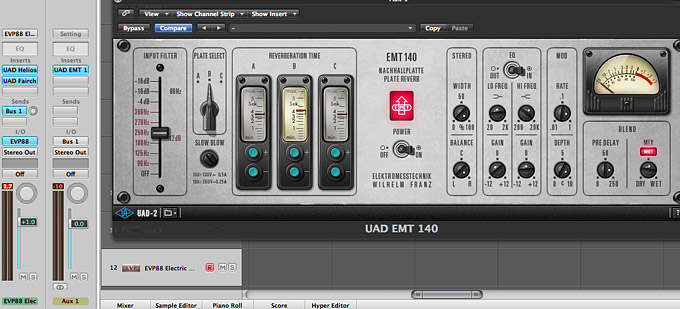Tips & Tricks — EMT® 140 Classic Plate Reverberator Plug-In
The EMT® 140 Plate Reverb, says legendary engineer Alan Parsons, was “virtually the only reverb we used on Pink Floyd’s Dark Side of the Moon.” As anyone who has ever donned a pair of headphones and settled into Dark Side’s glorious, astral ambiences can attest, it was a propitious decision to use Abbey Road’s EMT 140 on tracks like “Time” and “Eclipse.” Though really, in 1973, the EMT 140 — introduced only 15 years earlier by Wilhelm Franz and his team at Germany’s Elektro-Mess-Technik — was the only high-end reverb game in town. The company’s later all-digital EMT 250 Reverberator — the world’s first digital reverb — was still five years away from seeing the light of day.
Universal Audio’s EMT® 140 Classic Plate Reverberator Plug-In is stunningly accurate to the legendary unit’s character and class, and it will allow you to wield its mighty sonics without putting your back out hefting the original’s 600-pound sheet metal plate enclosures. It’ll also give you some definite advantages that the original units — including the three 140s from Sausalito, California’s The Plant upon which Universal Audio based their models — decidedly lacked. This allows you to be far more exact in calculating predelay and other values than you could on the originals.
While not a replacement for reading the UAD Users Manual, this article will look at several ways you can exploit UA’s EMT 140 plug-in, from basic setup and mix ideas to more adventurous, textural applications. Like Mr. Parsons, we’ll be building a song from scratch using the EMT 140 as our only reverb. Hopefully, it will encourage you to get the most out of this terrific plug-in, even if spending several hundred weeks on the Billboard Top 200 is not in your next album’s future!
Before we dive into the details, here’s a listen to the final result: READ MORE







